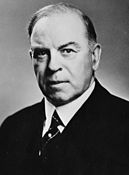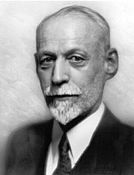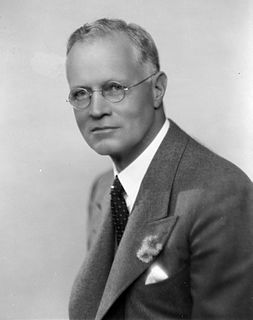| |||||||||||||||||||||||||||||||||||||||||||||||||||||||||||||||||||||||
245 seats in the 19th Canadian Parliament 123 seats needed for a majority | |||||||||||||||||||||||||||||||||||||||||||||||||||||||||||||||||||||||
|---|---|---|---|---|---|---|---|---|---|---|---|---|---|---|---|---|---|---|---|---|---|---|---|---|---|---|---|---|---|---|---|---|---|---|---|---|---|---|---|---|---|---|---|---|---|---|---|---|---|---|---|---|---|---|---|---|---|---|---|---|---|---|---|---|---|---|---|---|---|---|---|
| |||||||||||||||||||||||||||||||||||||||||||||||||||||||||||||||||||||||
 | |||||||||||||||||||||||||||||||||||||||||||||||||||||||||||||||||||||||
| |||||||||||||||||||||||||||||||||||||||||||||||||||||||||||||||||||||||
The Canadian federal election of 1940 was the 19th general election in Canadian history. It was held March 26, 1940, to elect members of the House of Commons of Canada of the 19th Parliament of Canada. Prime Minister William Lyon Mackenzie King's Liberal Party was re-elected to their second consecutive majority government.

The House of Commons of Canada is a component of the Parliament of Canada, along with the Sovereign and the Senate. The House of Commons currently meets in a temporary Commons chamber in the West Block of the parliament buildings on Parliament Hill in Ottawa, while the Centre Block, which houses the traditional Commons chamber, undergoes a ten-year renovation.
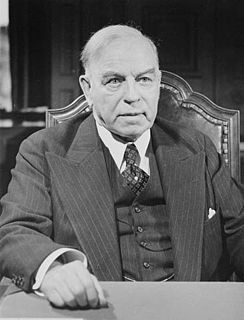
The 19th Canadian Parliament was in session from May 16, 1940, until April 16, 1945. The membership was set by the 1940 federal election on March 26, 1940, and it changed only somewhat due to resignations and by-elections until it was dissolved prior to the 1945 election.

Canada is a country in the northern part of North America. Its ten provinces and three territories extend from the Atlantic to the Pacific and northward into the Arctic Ocean, covering 9.98 million square kilometres, making it the world's second-largest country by total area. Canada's southern border with the United States is the world's longest bi-national land border. Its capital is Ottawa, and its three largest metropolitan areas are Toronto, Montreal, and Vancouver. As a whole, Canada is sparsely populated, the majority of its land area being dominated by forest and tundra. Consequently, its population is highly urbanized, with over 80 percent of its inhabitants concentrated in large and medium-sized cities, many near the southern border. Canada's climate varies widely across its vast area, ranging from arctic weather in the north, to hot summers in the southern regions, with four distinct seasons.
Contents
The election was overshadowed by the Second World War, which caused many Canadians to rally around the government. In response to this, the Conservative Party of Robert Manion ran on a platform advocating the creation of an all-party national unity government and ran under the name "National Government" in this election. Though Manion was personally opposed to conscription, the Liberals faced intense pressure in Quebec on the question and promised not to institute the measure. This promise was to haunt the Liberals as they faced increasing pressure from the military and especially from English Canada to bring in the measure. To release him from his 1940 promise, King called a plebiscite in 1942 on the question. See also Conscription Crisis of 1944. It was the most successful election for the Liberal Party in its history, in which it captured 73% of the seats in the House of Commons.

World War II, also known as the Second World War, was a global war that lasted from 1939 to 1945. The vast majority of the world's countries—including all the great powers—eventually formed two opposing military alliances: the Allies and the Axis. A state of total war emerged, directly involving more than 100 million people from over 30 countries. The major participants threw their entire economic, industrial, and scientific capabilities behind the war effort, blurring the distinction between civilian and military resources. World War II was the deadliest conflict in human history, marked by 50 to 85 million fatalities, most of whom were civilians in the Soviet Union and China. It included massacres, the genocide of the Holocaust, strategic bombing, premeditated death from starvation and disease, and the only use of nuclear weapons in war.
A national unity government, government of national unity, or national union government is a broad coalition government consisting of all parties in the legislature, usually formed during a time of war or other national emergency.

Conscription, sometimes called the draft, is the compulsory enlistment of people in a national service, most often a military service. Conscription dates back to antiquity and continues in some countries to the present day under various names. The modern system of near-universal national conscription for young men dates to the French Revolution in the 1790s, where it became the basis of a very large and powerful military. Most European nations later copied the system in peacetime, so that men at a certain age would serve 1–8 years on active duty and then transfer to the reserve force.
Social Credit ran jointly with the New Democracy movement of William Duncan Herridge.

The Social Credit Party of Canada, colloquially known as the Socreds, was a conservative-populist political party in Canada that promoted social credit theories of monetary reform. It was the federal wing of the Canadian social credit movement.
New Democracy was a political party in Canada founded by William Duncan Herridge in 1939. Herridge, a former Conservative party adviser who was Canada's Envoy to the United States from 1931–35 during the government of R. B. Bennett.

William Duncan Herridge, was a Canadian politician and diplomat.
Some candidates of the Conservative and Social Credit parties insisted on running under the traditional names, however.
The Co-operative Commonwealth Federation (CCF) gained its first seat east of Manitoba, with the election of Clarence Gillis from Cape Breton Island. This election was the last one for its ailing leader, J. S. Woodsworth.
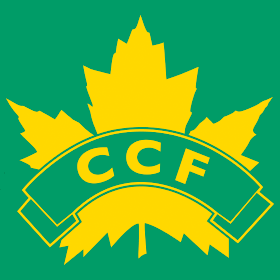
The Co-operative Commonwealth Federation (CCF) was a social-democratic and democratic socialist political party in Canada. The CCF was founded in 1932 in Calgary, Alberta, by a number of socialist, agrarian, co-operative, and labour groups, and the League for Social Reconstruction. In 1944, the CCF formed the first social-democratic government in North America when it was elected to form the provincial government in Saskatchewan. In 1961, the CCF was succeeded by the New Democratic Party (NDP). The full, but little used, name of the party was Co-operative Commonwealth Federation (Farmer-Labour-Socialist).

Clarence (Clarie) Gillis, MP was a Canadian social democratic politician and trade unionist from Cape Breton Island, Nova Scotia. He was born on Nova Scotia's mainland, but grew up in Cape Breton. He worked in the island's underground coal mines operated by the British Empire Steel and Coal Company (BESCO). He also served as a member of the infantry in the Canadian Corps in Flanders during the First World War. After the war he returned to the coal mines and became an official with the mine's United Mine Workers of America (UMW) union. In 1938, he helped bring UMW Local 26 into the Co-operative Commonwealth Federation (CCF), becoming the first labour local to affiliate with the party. In 1940, he became the first CCF member elected to the House of Commons of Canada, east of Manitoba. While serving in the House, he was known as its leading voice championing labour issues. He was also a main voice for social rights during his 17-years in Parliament. His most notable achievement was securing the funding that allowed the building of a fixed-link between Nova Scotia's mainland and Cape Breton Island at the Strait of Canso: the Canso Causeway. After winning four-straight elections, he was defeated in 1957 and died three-years later in Glace Bay, Nova Scotia.

Cape Breton Island is an island on the Atlantic coast of North America and part of the province of Nova Scotia, Canada.
Voter turn-out: 69.9%
